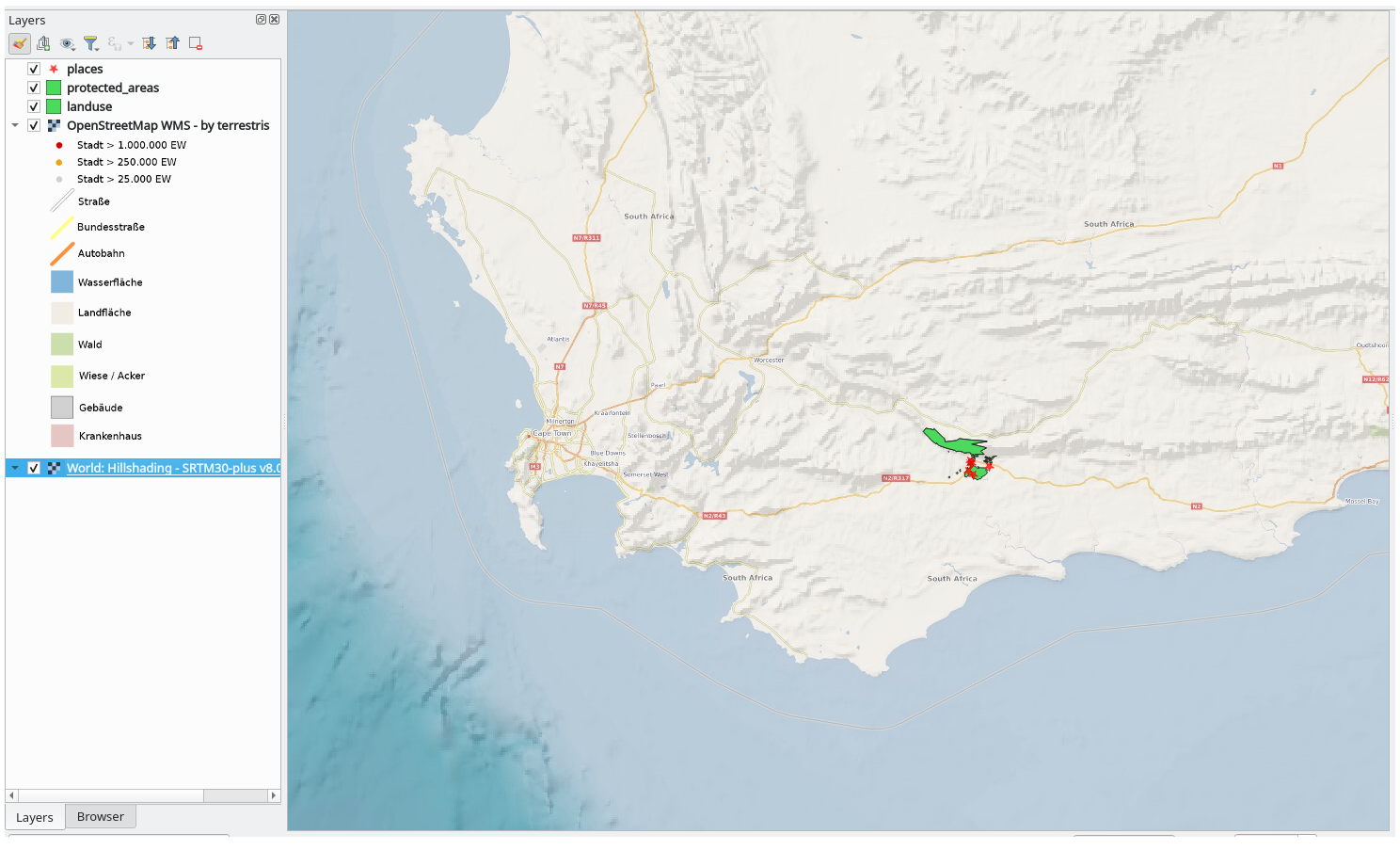Important
Traducerea este un efort al comunității, la care puteți să vă alăturați. În prezent, această pagină este tradusă 39.47%.
10.1. Lesson: Web Mapping Services
Un Serviciu de Cartografiere Web (WMS) este un serviciu găzduit pe un server aflat la distanță. Similar unui site web, îl puteți accesa, atât timp cât aveți o conexiune la server. Cu ajutorul QGIS, puteți încărca un WMS direct în harta existentă.
Din lecția despre plugin-uri, ne amintim că este posibilă încărcarea unei noi imagini raster, spre exemplu, de la Google. Totuși, aceasta este o tranzacție once-off: o dată ce ați descărcat imaginea, aceasta nu se mai schimbă. Un WMS este diferit prin faptul că este un serviciu live, care se va actualiza automat, la deplasarea sau mărirea hărții.
Scopul acestei lecții: De a folosi un WMS și de a-i înțelege limitările.
10.1.1. ★☆☆ Follow Along: Loading a WMS Layer
For this exercise, you can either use the basic map you made at the start of the course, or just start a new map and load some existing layers into it. For this example, we used a new map and loaded the original places, landuse and protected_areas layers and adjusted the symbology:
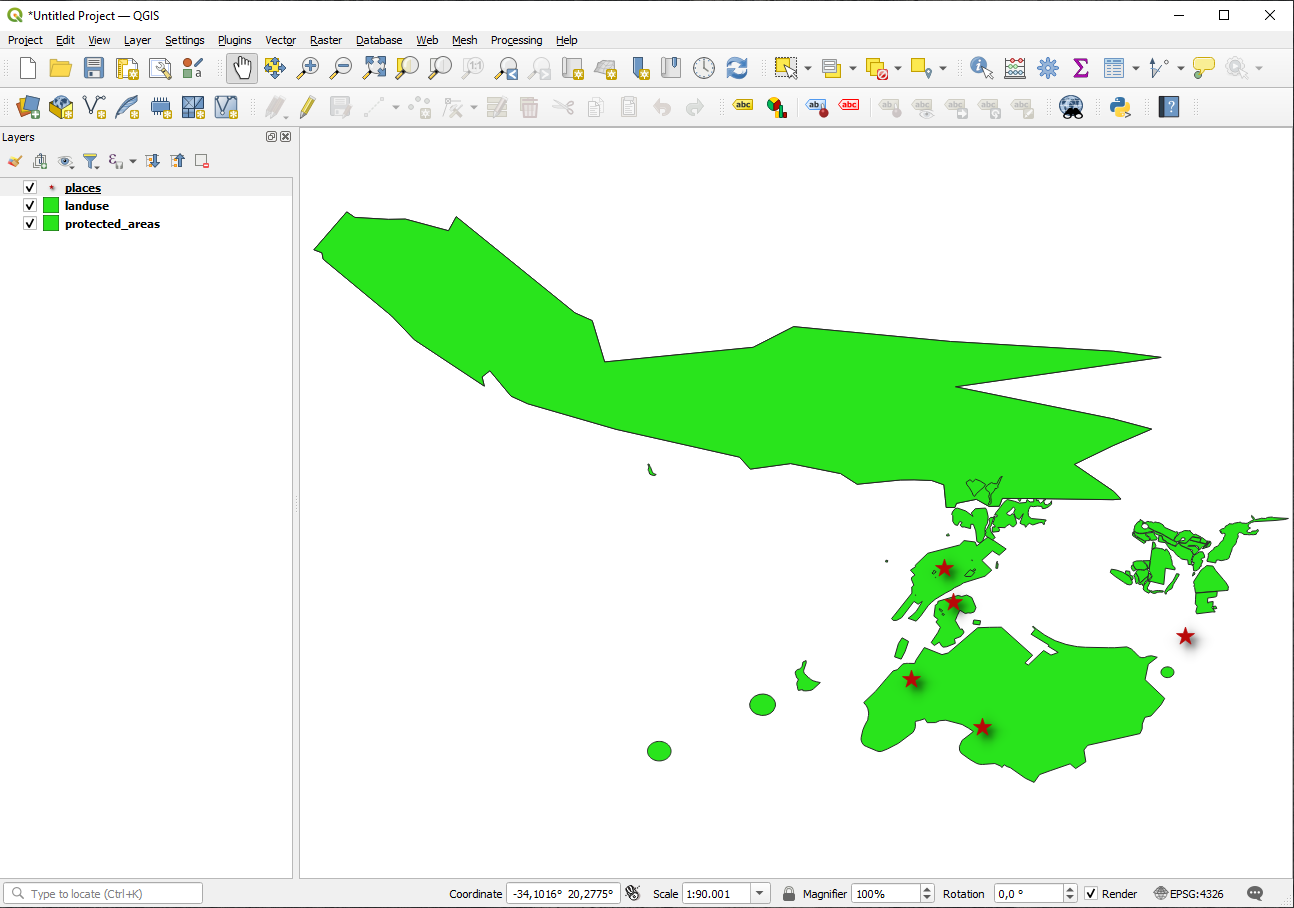
Încărcați aceste straturi într-o nouă hartă, sau folosiți harta originală doar cu aceste straturi vizibile.
Before starting to add the WMS layer, deactivate „on the fly” projection ( tab, check No CRS (or unknown/non-Earth projection). This may cause the layers to no longer overlap properly, but don’t worry: we’ll fix that later.
To add WMS layers, click on the
 button to open the
Data Source Manager dialog and enable the
button to open the
Data Source Manager dialog and enable the  WMS/WMTS tab.
WMS/WMTS tab.
Remember how you connected to a SpatiaLite or GeoPackage database at the beginning of the course. The landuse, buildings, and roads layers are stored in a database. To use those layers, you first needed to connect to the database. Using a WMS is similar, with the exception that the layers are on a remote server.
Pentru a crea o nouă conexiune la un WMS, faceți clic pe butonul New.
You’ll need a WMS address to continue. There are several free WMS servers available on the Internet. One of these is terrestris, which makes use of the OpenStreetMap dataset.
Pentru a face uz de acest WMS, setați-l în dialogul curent, astfel:
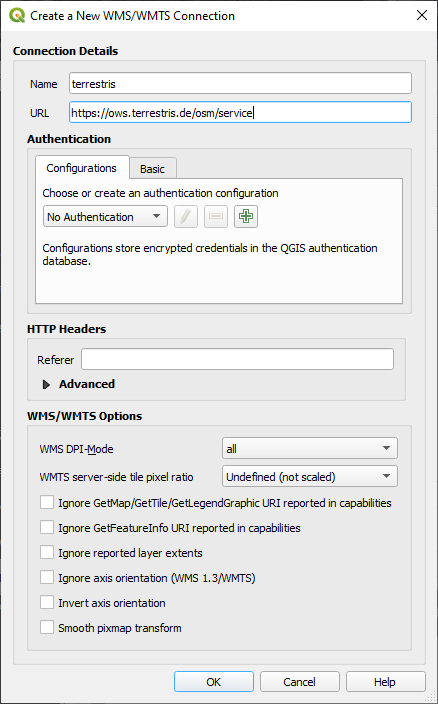
The value of the Name field should be
terrestris.The value of the URL field should be
https://ows.terrestris.de/osm/service.
Faceți clic pe Ok. Ar trebui să vedeți listat noul server WMS:
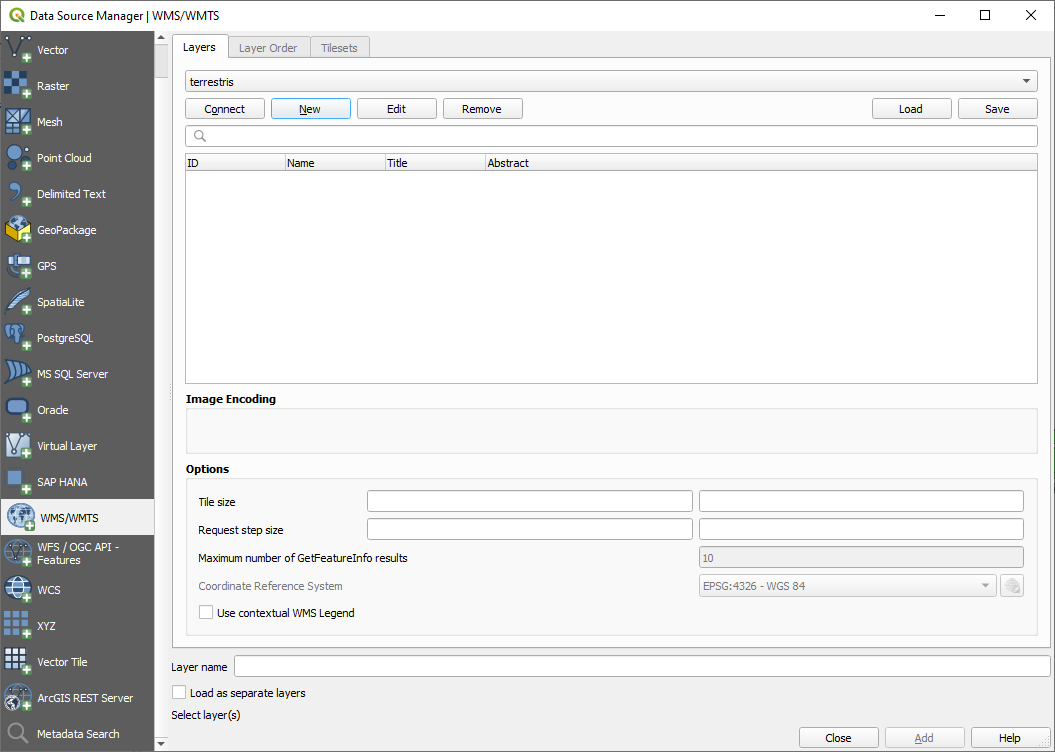
Faceți clic pe Conectare. În lista de mai jos, ar trebui să vedeți încărcate acum, aceste noi intrări:
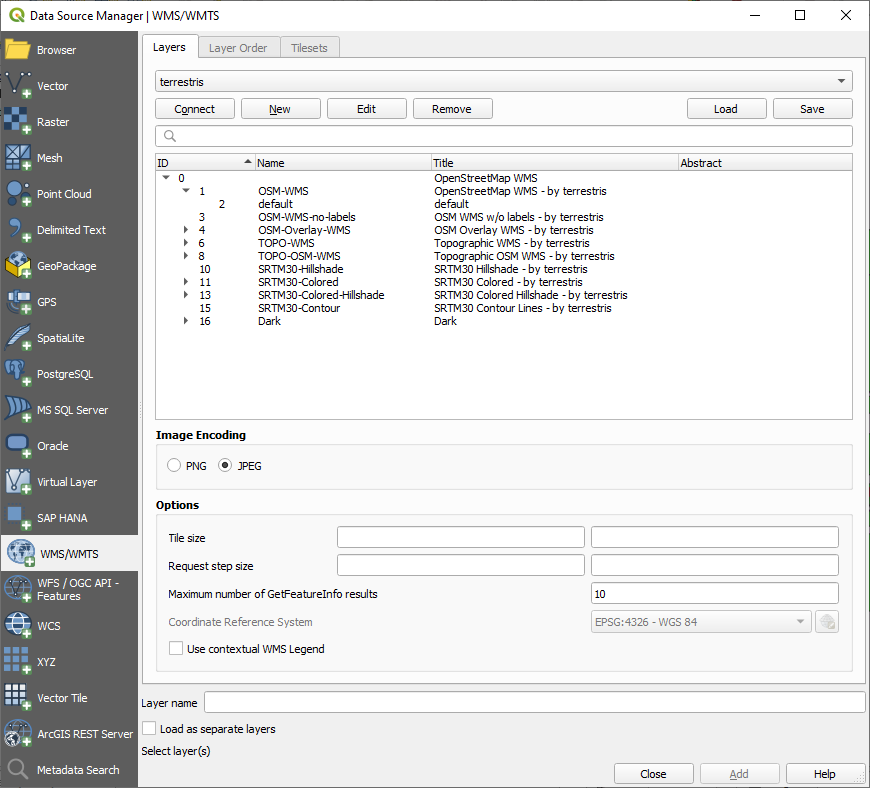
Acestea sunt toate straturile găzduite de acest server WMS.
Click once on the OSM-WMS layer. This will display the default Coordinate Reference System in use and the number of CRSes supported by the dataset:

Since we’re not using
EPSG:4326 - WGS 84for our map, let’s find one that meets our needs.Click the
 Select CRS button. You will see a standard
Coordinate Reference System Selector dialog
showing all the CRS the data is published with.
Select CRS button. You will see a standard
Coordinate Reference System Selector dialog
showing all the CRS the data is published with.We want a projected CRS, so let’s choose WGS 84 / Pseudo-Mercator with
EPSG:3857. You can use the top Filter widget.
Filter widget.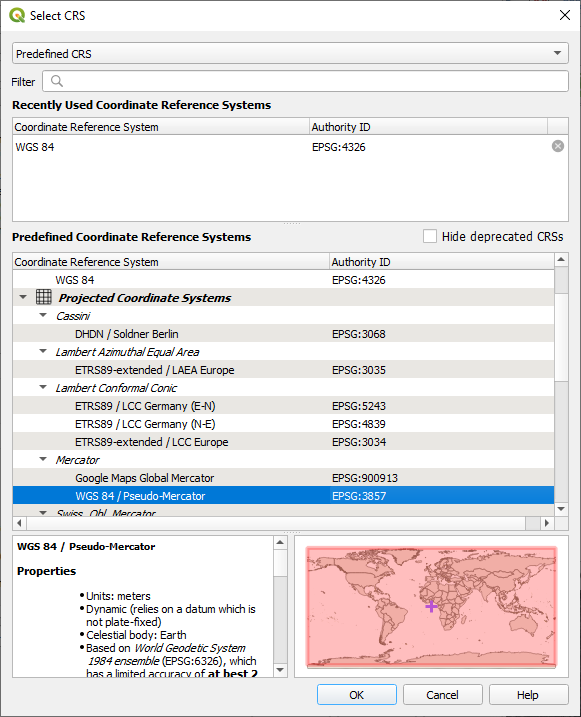
Click OK. The Coordinate Reference System associated with the entry has changed.
Click Add to load the layer in your project using Layer name` (default is OpenStreetMap WMS - by terrestris).
Close the Data Source Manager dialog if not done automatically
In the Layers panel, click and drag it to the bottom of the list.
Zoom out in order to get a global view of the layers. You will notice that your layers aren’t located correctly (near west of Africa). This is because „on the fly” projection is disabled.

Let’s enable the reprojection again, but using the same projection as the OpenStreetMap WMS layer, which is WGS 84 / Pseudo Mercator.
Open the tab
Uncheck No CRS (or unknown/non-Earth projection)
Alegeți WGS 84 / Pseudo Mercator din listă.
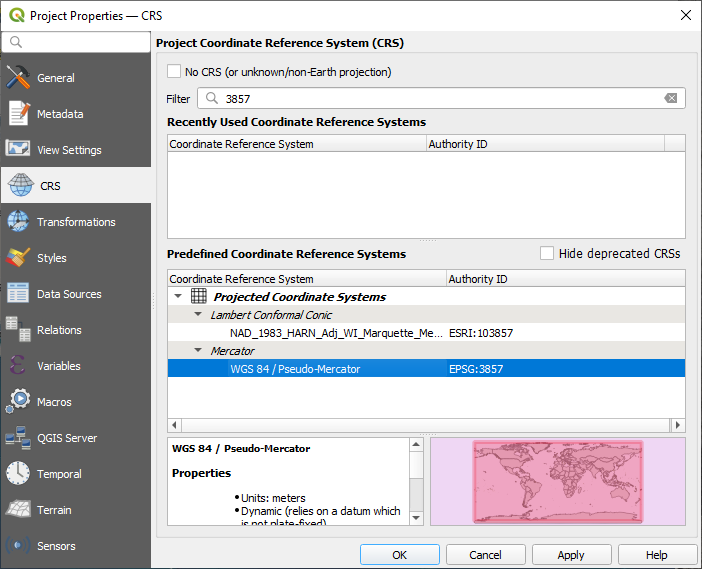
Clic pe OK
Now right-click on one of your own layers in the Layers panel and click Zoom to layer(s). You should see the Swellendam area:
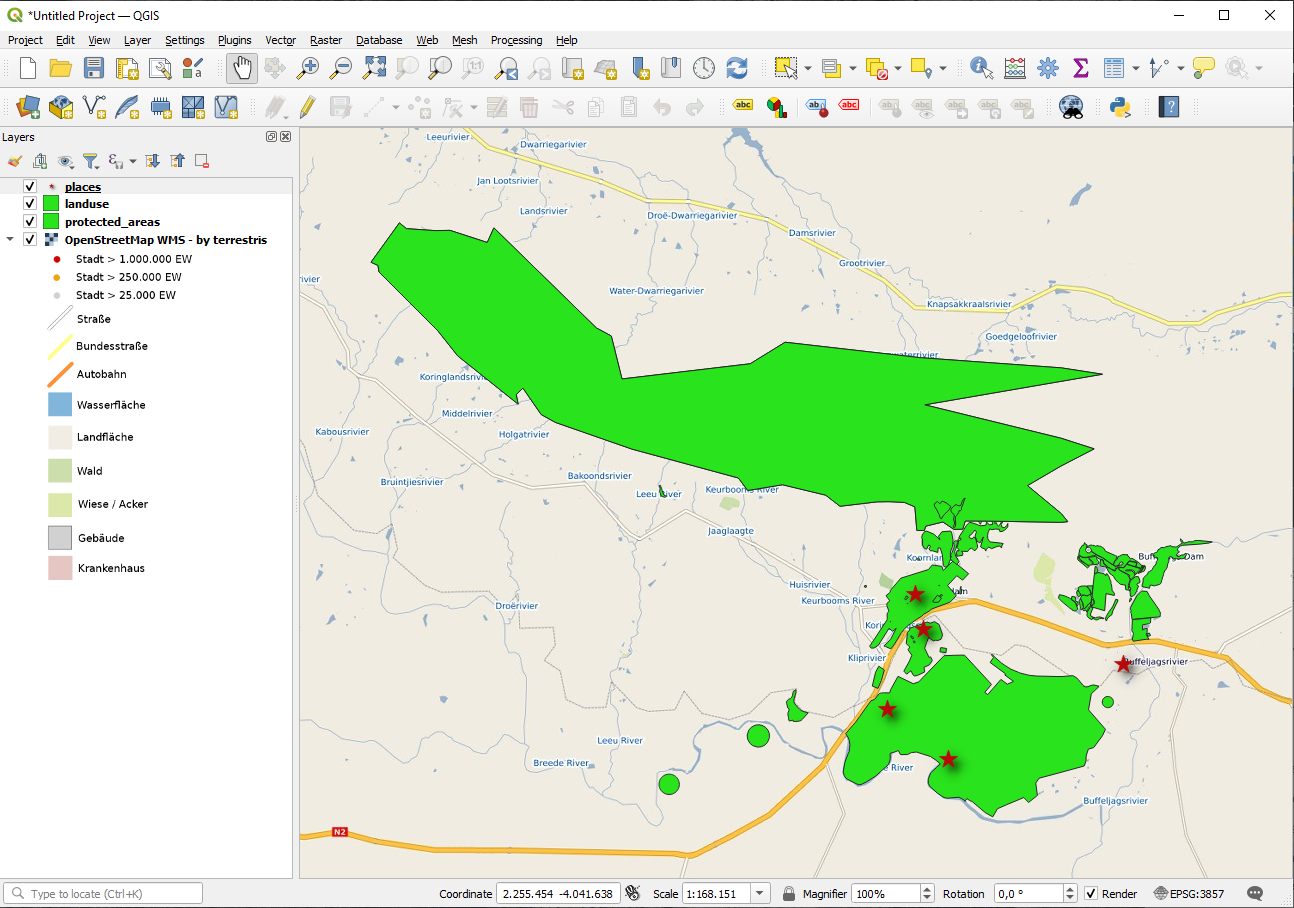
Notă cum se suprapun străzile stratului WMS cu propriile noastre străzi. Ăsta e un semn bun!
Natura și limitele WMS
By now you may have noticed that this WMS layer actually has many features in it. It has streets, rivers, nature reserves, and so on. What’s more, even though it looks like it’s made up of vectors, it seems to be a raster, but you can’t change its symbology. Why is that?
This is how a WMS works: it’s a map, similar to a normal map on paper, that you receive as an image. What usually happens is that you have vector layers, which QGIS renders as a map. But using a WMS, those vector layers are on the WMS server, which renders it as a map and sends that map to you as an image. QGIS can display this image, but can’t change its symbology, because all that is handled on the server.
This has several advantages, because you don’t need to worry about the symbology. It’s already worked out, and should be nice to look at on any competently designed WMS.
On the other hand, you can’t change the symbology if you don’t like it, and if things change on the WMS server, then they’ll change on your map as well. This is why you sometimes want to use a Web Feature Service (WFS) instead, which gives you vector layers separately, and not as part of a WMS-style map.
This will be covered in the next lesson, however. First, let’s add another WMS layer.
10.1.2. ★☆☆ Încercați și dvs.:
Add the
eAtlasWMS server at this URL:https://maps.eatlas.org.au/maps/wmsLoad a World: Hillshading layer into the map.
You might want to set its Encoding to JPEG and its Tile size option to
200by200, so that it loads faster.Your map should look like this (you may need to re-order the layers, and apply some transparency):
Răspuns
Go to the Data Source Manager, WMS / WMTS tab and create a new connection entry
Use the
 text box to filter the list of layers and select the corresponding layer
text box to filter the list of layers and select the corresponding layerRemember to check/turn its CRS into EPSG:3857 - WGS 84 / Pseudo Mercator as the rest of the map.
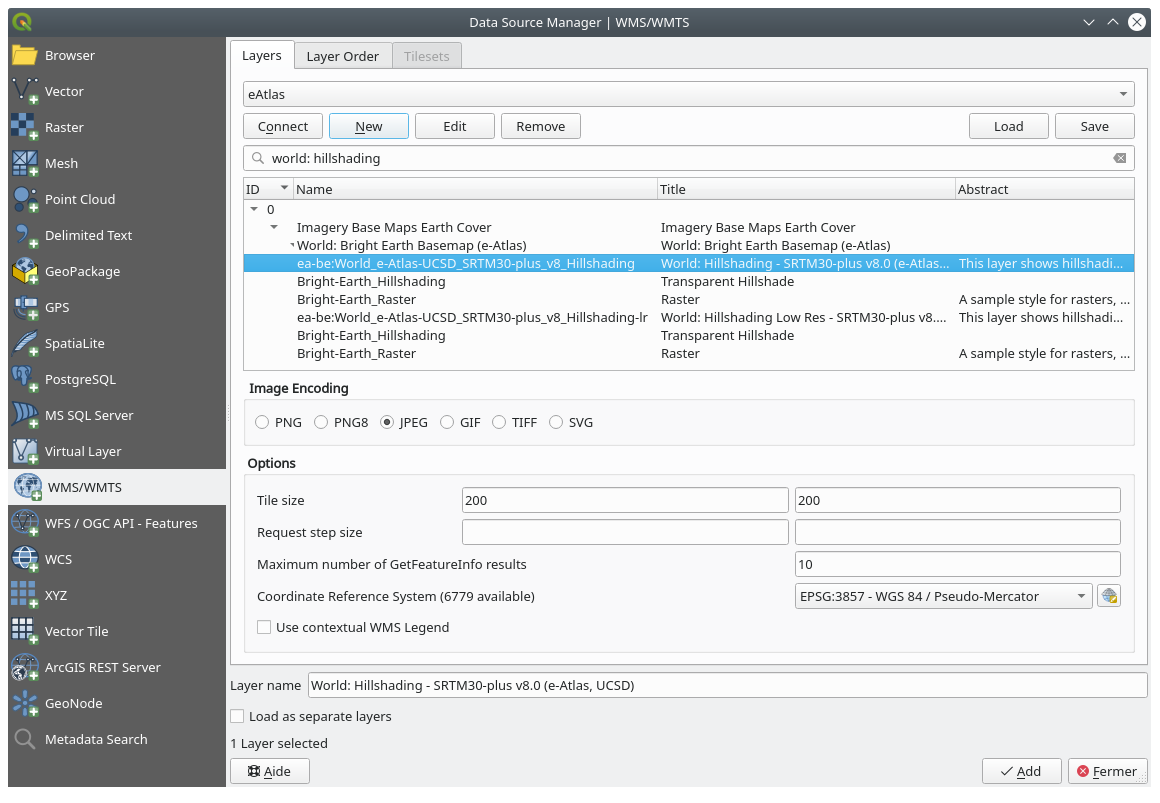
After the layer is loaded, you can modify its Opacity value (under the Transparency properties tab)
10.1.3. ★★★ Încercați și dvs.:
O parte din dificultatea de a folosi WMS, este de a găsi un server bun (și gratuit).
Find a new WMS at directory.spatineo.com (or elsewhere online). It must not have associated fees or restrictions, and must have coverage over the Swellendam study area.
Amintiți-vă că pentru un WMS aveți nevoie doar de URL-ul său (și, de preferință, un fel de descriere).
Răspuns
Spatineo is one of many places you can search for a OGC data. Type in the text area a name, keyword, location of your interest to see if you get some working results. For this lesson, you might want to filter the results to include WMS only.
You may notice that many WMS servers are not always available. Sometimes this is temporary, sometimes it is permanent. An example of a WMS server that worked at the time of writing is the MapServer Demonstration Server WMS at https://demo.mapserver.org/cgi-bin/wms?SERVICE=WMS&VERSION=1.3.0&REQUEST=GetCapabilities. It does not require fees or have access constraints, and it is global. Therefore, it does satisfy the requirements. Keep in mind, however, that this is merely an example. There are many other WMS servers to choose from.
10.1.4. ★★★ Încercați și dvs.:
Add the bluemarble layer from the MapServer Demonstration Server. Is that a suitable dataset for our study area?
Răspuns
Hide all other WMS layers to prevent them from rendering unnecessarily in the background.
Use the same approach as before to add the new server and the appropriate layer as hosted on that server:
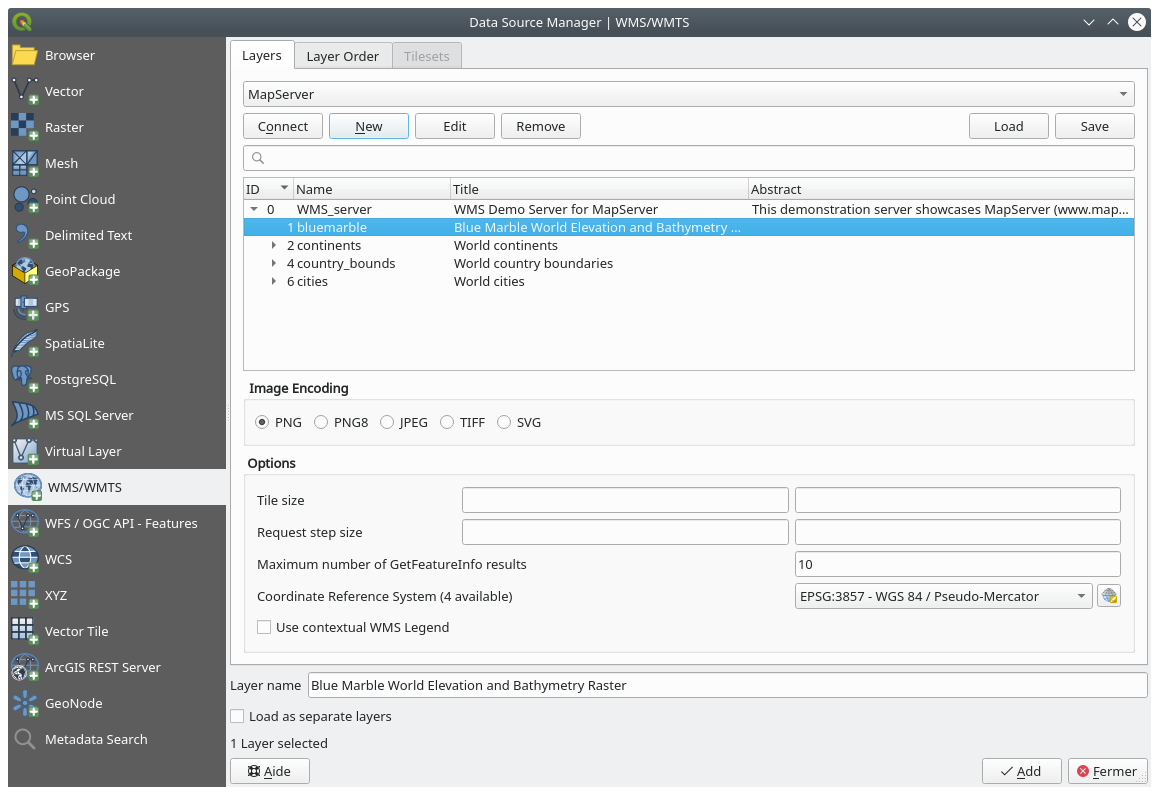
If you zoom into the Swellendam area, you’ll notice that this dataset has a low resolution:
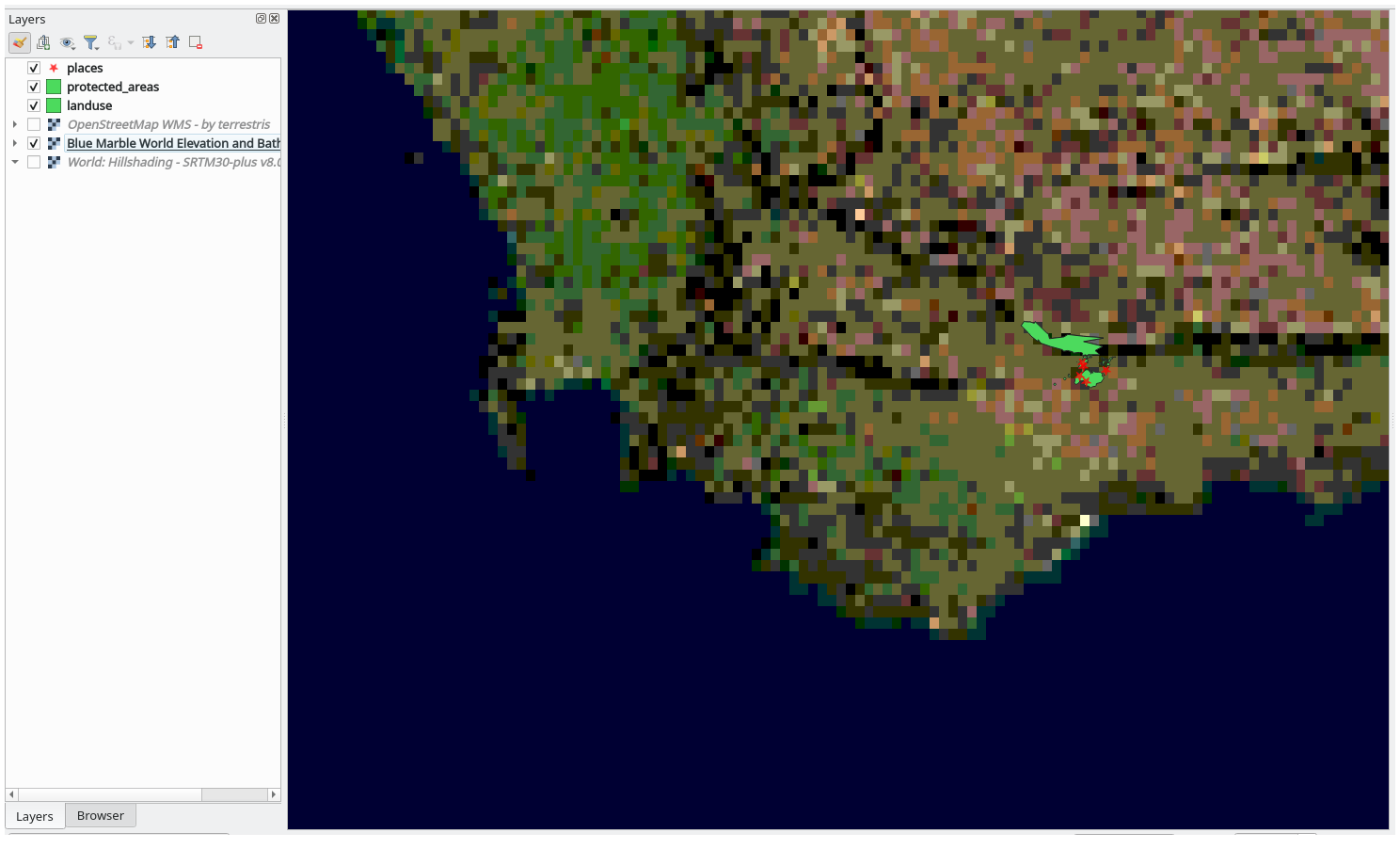
Therefore, it’s better not to use this data for the current map. The Blue Marble data is more suitable at global or national scales
10.1.5. În concluzie
Folosind un WMS, puteți adăuga hărți inactive ca fundaluri pentru datele hărților existente.
10.1.6. Further Reading
10.1.7. Ce urmează?
Now that you’ve added an inactive map as a backdrop, you’ll be glad to know that it’s also possible to add features (such as the other vector layers you added before). Adding features from remote servers is possible by using a Web Feature Service (WFS). That’s the topic of the next lesson.
